Michael Pelczar
Visit to download the full and correct content document: https://ebookmass.com/product/phenomenalism-a-metaphysics-of-chance-and-experi ence-1st-edition-michael-pelczar/

More products digital (pdf, epub, mobi) instant download maybe you interests ...
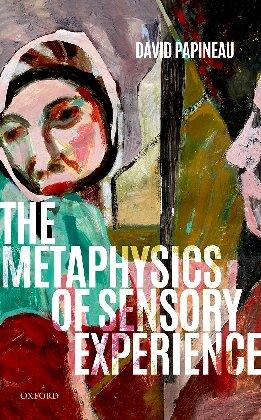
The Metaphysics of Sensory Experience David Papineau
https://ebookmass.com/product/the-metaphysics-of-sensoryexperience-david-papineau/
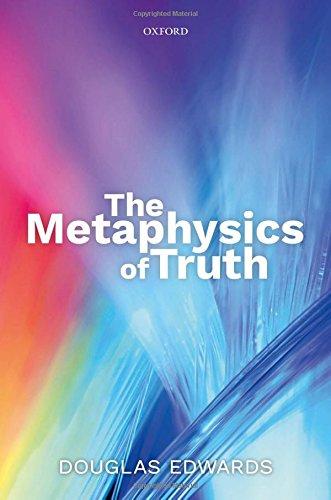
The Metaphysics of Truth 1st Edition Douglas Edwards
https://ebookmass.com/product/the-metaphysics-of-truth-1stedition-douglas-edwards/

Beyond Chance and Credence: A Theory of Hybrid Probabilities 1st Edition Wayne C. Myrvold
https://ebookmass.com/product/beyond-chance-and-credence-atheory-of-hybrid-probabilities-1st-edition-wayne-c-myrvold/
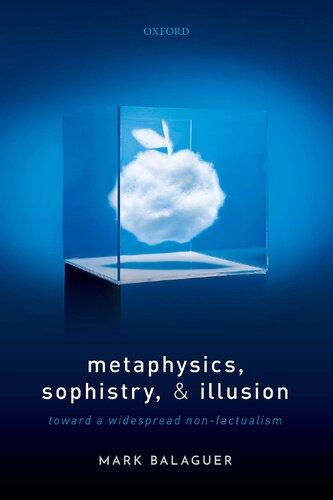
Metaphysics, Sophistry, and Illusion: Toward a Widespread Non-Factualism 1st Edition Mark Balaguer
https://ebookmass.com/product/metaphysics-sophistry-and-illusiontoward-a-widespread-non-factualism-1st-edition-mark-balaguer/
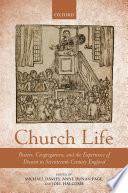
Church Life: Pastors, Congregations, and the Experience of Dissent in Seventeenth-Century England Michael Davies
https://ebookmass.com/product/church-life-pastors-congregationsand-the-experience-of-dissent-in-seventeenth-century-englandmichael-davies/
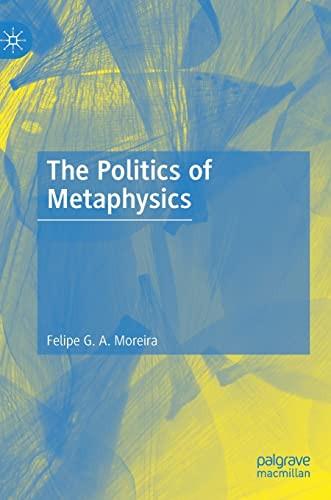
The
Politics of Metaphysics Felipe G. A. Moreira
https://ebookmass.com/product/the-politics-of-metaphysics-felipeg-a-moreira/

A Plea for Naturalistic Metaphysics Ulrich Steinvorth
https://ebookmass.com/product/a-plea-for-naturalisticmetaphysics-ulrich-steinvorth/
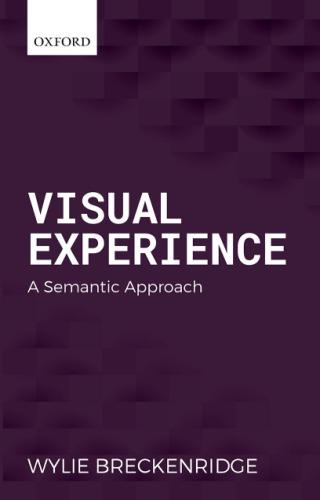
Visual Experience: A Semantic Approach 1st Edition Wylie Breckenridge
https://ebookmass.com/product/visual-experience-a-semanticapproach-1st-edition-wylie-breckenridge/
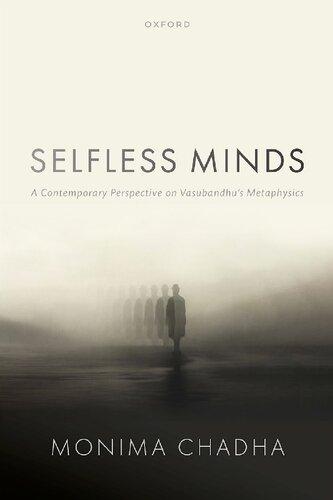
Selfless Minds: A Contemporary Perspective on Vasubandhu's Metaphysics Monima Chadha
https://ebookmass.com/product/selfless-minds-a-contemporaryperspective-on-vasubandhus-metaphysics-monima-chadha/

Phenomenalism
Phenomenalism
A Metaphysics of Chance and Experience
MICHAEL PELCZAR


Great Clarendon Street, Oxford, OX2 6DP, United Kingdom
Oxford University Press is a department of the University of Oxford. It furthers the University’s objective of excellence in research, scholarship, and education by publishing worldwide. Oxford is a registered trade mark of Oxford University Press in the UK and in certain other countries
© Michael Pelczar 2023
The moral rights of the author have been asserted
First Edition published in 2023
Impression: 1
All rights reserved. No part of this publication may be reproduced, stored in a retrieval system, or transmitted, in any form or by any means, without the prior permission in writing of Oxford University Press, or as expressly permitted by law, by licence or under terms agreed with the appropriate reprographics rights organization. Enquiries concerning reproduction outside the scope of the above should be sent to the Rights Department, Oxford University Press, at the address above
You must not circulate this work in any other form and you must impose this same condition on any acquirer
Published in the United States of America by Oxford University Press 198 Madison Avenue, New York, NY 10016, United States of America
British Library Cataloguing in Publication Data Data available
Library of Congress Control Number: 2022946074
ISBN 978–0–19–286873–2
ebook ISBN 978–0–19–269519–2
DOI: 10.1093/oso/9780192868732.001.0001
Printed and bound in the UK by Clays Ltd, Elcograf S.p.A.
Links to third party websites are provided by Oxford in good faith and for information only Oxford disclaims any responsibility for the materials contained in any third party website referenced in this work.
If it looks like a duck, swims like a duck, and quacks like a duck, then it is probably a duck.
—unknown
Contents
Acknowledgements
Preface
List of Figures
1. 2.
The World as Hypertext
Mill’s Metaphysics
The genealogy of phenomenalism
Kant without noumena
Mill misunderstood
Legacy issues
3.
A Signal in the Noise
Physical reality as explanatory posit “Real things” vs. noumena
Noumena vs. possibilities of sensation
The superfluity of Substance
The ultimate sin in metaphysics?
Possibilities for What?
The challenge of intersubjectivity
Physical spacetime
Ideal spacetime
Ideal events
Reduction or elimination?
5.
What Kind of Possibility?
Counterfactual possibility
Phenomenal probabilities
The phenomenalist worldview
A Revealing Correspondence
A thing for every possibility
A possibility for every thing
An explanation by identification
Phenomenalism and Science
Physics and experience
Phenomenalism and scientific language
Phenomenalism and structuralism
8. 8.1 8.2 8.3 8.4 8.5
Phenomenalism and Consciousness
The mystery of consciousness
Orthodox phenomenalism
Materialistic phenomenalism
Panpsychist phenomenalism
Panoptic phenomenalism
9. 9.1 9.2 9.3 9.4
10.
A Phenomenalist Theory of Perception
Three questions about perception
Representationalism and naive realism
The phenomenalist theory
Phenomenalists, Berkeley, and the folk
Choose Your Own Adventure
Appendix: Defining Spacetime Relations
References
Index of Names
Subject Index
Acknowledgements
I began work on this book in 2016, during a sabbatical leave at Princeton, whose hospitality I gratefully acknowledge. Since then, the book has gone through many changes, including several complete tear-downs and rebuilds. Throughout the process, I’ve had the benefit of excellent advice and sharp but always good-natured criticism from a variety of sources. Geoffrey Lee, Eugene Mills, and Kevin Morris contributed to a symposium on my first book about phenomenalism, organized by Neil Manson; thinking through their comments was the first step towards the present book. My colleagues in Singapore were supportive and insightful as always; I should particularly mention my current colleagues Zach Barnett, Bob Beddor, Ben Blumson, Ethan Jerzak, Lavinia Picollo, Abelard Podgorsky, Qu Hsueh Ming, Neil Sinhababu, Tang Weng Hong, and Dan Waxman, and past colleagues Fatema Amijee and Frank Jackson. Howard Robinson provided detailed and incisive comments on a penultimate draft of the manuscript, which resulted in many improvements (though none, I expect, that will bring him over to the Millian side of mind-first metaphysics). In 2017, David Chalmers organized an idealism workshop in Shanghai, where I presented some ideas related to the book; I received excellent feedback from the workshop participants on that occasion. Also in 2017, I presented a paper on phenomenalism at Chapel Hill North Carolina, where I again received excellent feedback, especially from Rob Smithson and Thomas Hofweber. In 2018 I presented a different phenomenalism-related paper as part of an idealism symposium organized by Craig Warmke for the Central APA meeting in Chicago that year; I got great input from the attendees of that symposium, and especially from Brian Cutter, who commented on my paper. Helen Yetter-Chappell and her graduate students at the University of Miami read a complete draft of the book in 2019, and their comments
prompted many changes. I should also thank Andrew Bailey, John Burgess, Stuart Derbyshire, Alan Hájek, Mark Johnston, Robert Kirk, Uriah Kriegel, Harold Langsam, Neil Mehta, David Papineau, and Galen Strawson for their thoughts on themes directly related to the book, and last but not least the anonymous readers for Oxford University Press for their valuable comments and suggestions.
M.W.P.
Preface
Ask a metaphysician today about the relationship between mind and matter, and you’ll probably hear a lot about whether consciousness reduces to something physical, like a brain state. The unspoken assumption is that the physical world is familiar, well-understood, and ultimately unmysterious The question is what to make of conscious experience, including the experience that reveals the world to us.
Travel back in time a hundred years or so to ask the same question, and you’ll hear a lot about whether physical things reduce to something mental. The unspoken assumption was that conscious experience was something familiar, well-understood, and ultimately unmysterious. The question was what to make of the world that experience reveals.
Return to the present, and you might notice signs of renewed interest in the older question. With the prospects for a reductive theory of consciousness looking increasingly dim, and physics looking increasingly incapable of providing its own interpretation, some people are giving reductive theories of the physical a second chance, including theories that attempt to define the physical in mental terms rather than vice versa.1
This book is my contribution to the revival of mind-first metaphysics. Its aim is to convince you that physical things are nothing more than tendencies for experiences to occur in certain ways—“permanent possibilities of sensation,” as J.S. Mill calls them. Many have found Mill’s proposal intriguing, but it’s not easy to turn it into a proper theory. What does “possibility” mean in this context, and what sort of experiences are physical things supposed to be possibilities for? Historic treatments of phenomenalism leave these
questions largely unanswered. In the pages that follow I try to do better.
At the end of the day, phenomenalism is a simple idea: a rock is a tendency for experiences to occur as they do when people perceive a rock, and likewise for all other physical things. This book is an elaboration of that idea.
M.W.P.
Singapore February 2021
1 Prominent examples include David Chalmers, Rae Langton, and Galen Strawson: see (Chalmers 1996: 297–308), Langton (1998), and Strawson (2006) Two philosophers never stopped asking the older question: see Foster, (1982; 1991; 2008) and Robinson (1982, 1994, forthcoming)
4 1
4.2.
4 3
4.4.
4 5
List of Figures
Part of a stream of consciousness
Splitting, merging, and intersecting streams
Checker Shadow Illusion
Wikimedia / Pbroks13Wikimedia / Pbroks13
Footprints
Wikimedia / Janhannes (CC BY-SA 4.0)
Floor Tile Illusion
Courtesy of Casa Ceramica
Weather map
US National Weather Service
Assignment of spatial coordinates
Assignment of temporal coordinates
Coordinate system resolution
Assignment of coordinates in ideal spacetime
1
The World as Hypertext
There’s a cantaloupe on the table. This has various implications. For one, if you were looking at the table, you’d have a visual impression of a roundish object with a variegated brownish green surface. For another, if you were to touch the cantaloupe, you’d have tactile experiences of something cool and hard. More generally, there’s a complex package of experiences that a person appropriately situated with respect to the cantaloupe is apt to have. This package of possible experiences is arguably unique. An object ever-so-slightly different from this particular melon would reveal its presence through slightly different experiences, at least in appropriately situated observers. It would have a slightly different phenomenal fingerprint, so to speak. A completely dissimilar object would come with a very different package of possible experiences.
This is all fairly obvious, but it raises an important philosophical question about the relationship between the melon and the associated package of possible experiences.
According to a very natural commonsense picture, the melon is in some sense prior to the possible experiences. The experiences we’re apt to have when perceiving the melon depend on the melon, which somehow underlies the experiences or their possibility.
In this book, we’re going to explore a different picture of the relationship. Could it be that the possible experiences are in fact fundamental, and that the melon just is the complex package of possible experiences? This is a radical departure from the commonsense view: a surprising inversion of our ordinary way of thinking.
Still, there might be something to it. After all, we only know of the melon by actually having some of the possible experiences associated with it. We never get any direct evidence of something underlying our experiences of physical things, existing independently of those experiences or the possibilities for them. If we want to keep our ontology as simple as our evidence allows, there’s at least something to be said for the inverted way of looking at things.
The standpoint I’ve described is called phenomenalism. It invites various objections. You might wonder how phenomenalists can make sense of possibilities for experience without positing an underlying reality that grounds or sustains the possibilities; you might wonder how phenomenalists can describe the relevant possibilities without calling on observers with appropriately constituted brains and sensory organs; you might wonder how to reconcile phenomenalism with the intersubjectivity of physical things. We’ll address these issues and others in due course. As we do so, and the more we reflect on the somewhat revisionary picture that phenomenalism presents, the more natural the view will come to seem—at least, that’s my hope. I also hope to show that phenomenalism sheds much-needed light on the connection between everyday experience and modern physics, the relationship between mind and body, and the nature of perceptual experience.
In the phenomenalist worldview, there are experiences, and there are possibilities for experience—and that’s all. Later, I’ll argue that the possibilities are best understood as conditional probabilities for various experiences to occur given the occurrence of other experiences. So, in my view, reality consists of experiences, and probabilities related to experience. The probabilities are the physical part of the world.
Let’s work our way a little deeper inside the phenomenalist worldview. Imagine that, unbeknownst to us, there are conscious beings who perceive without being perceived, and have no effect on the physical world. Imagine that our universe is thickly populated with such beings. Suppose that these beings—call them ideal observers—are distributed in time and space in such a way that no physical feature of our world escapes their notice: collectively, they
perceive every physical object, event, process, and state of affairs that exists in our world at any time or place.
An earthquake occurs off the coast of Sumatra, causing a tidal wave in Somalia. The occurrence of the wave event depends on the occurrence of the tectonic event. We might put this by saying that the tectonic event gives a certain probability to the occurrence of the wave event, or that the occurrence of the tidal wave counterfactually depends on the tectonic shift. Given the ubiquity of ideal observers, there are experiences of the earthquake, and experiences of the tidal wave, and the latter depend on the former to the same degree that the occurrence of the tidal wave depends on the occurrence of the earthquake. Likewise for all the events that occur between the earthquake and the tidal wave: as a water-wave propagates through the Indian Ocean, an experience-wave propagates through the ideal observers.
What if the only thing we knew about were the ideal observers’ experiences? We know about some observers’ earthquake experiences, we know about other observers’ tidal wave experiences, and we know these experiences stand in various counterfactual or probabilistic relations. We have, let’s suppose, complete information about the phenomenal qualities of all the observers’ mental lives, and complete information about the dependencies among the observers’ experiences. What should we infer from this information?
You might think it would be appropriate to infer the existence of an independently existing physical world with features that give the ideal observers their experiences and explain the dependencies among them.
But there’s another, more conservative, answer. What should we infer from the given information? Nothing! What calls for explanation about the ideal observers’ experience is its apparent nonrandomness: the observers’ experiences occur in regular and seemingly coordinated ways. It’s reasonable to think that something explains this fact. The minimum required to explain it are objective tendencies or propensities for the observers to have certain experiences, conditional on their having certain other experiences. But we’ve already inferred these tendencies, by positing relations of
probabilistic or counterfactual dependence among the ideal observers’ experiences. To explain the propagation of the experience-wave, it’s enough to suppose that certain observers have experiences as of rising water, which leads to certain other observers having experiences as of falling water, which leads to yet other observers having experiences as of rising water, and so forth. There’s no obvious need to posit anything further to explain the patterns in the observers’ experiences.
If this sounds like an invitation to external world skepticism, that’s not how it’s intended. As I see it, once we’ve concluded that certain experiences are apt to occur in certain ways conditional on the occurrence of certain other experiences, we’ve already arrived at an external world. Physical things just are propensities for experiences to occur in certain ways. They are, as Mill puts it, “permanent possibilities of sensation.”
The ideal observers are a fiction, but it’s at least possible for there to be experiences just like theirs, related to one another in just the same ways. For any possible physical world, we can imagine a network of experiences that would exist if that world were thickly populated with ideal observers. Call any such network of experiences an ideal world.
Given that our world doesn’t contain anything like the number and variety of experiences that exist in a scenario with ideal observers, the physical world we inhabit is not an ideal world. Still, we might identify physical reality with the circumstance that a certain ideal world is the one that would exist, if there were an ideal world; or, the circumstance that a certain ideal world is the one that would exist, if our own actual experiences were parts of an ideal world; or, the circumstance that a certain ideal world is the one with the highest probability of existing, conditional on our own experiences belonging to an ideal world. Phenomenalism is the view that physical reality is some such circumstance.
According to phenomenalists, physical facts are conditional facts about experience. Exactly what kind of conditional facts is negotiable: traditional phenomenalists think of them as counterfacts of the form, “If experiential state of affairs ϕ existed, experiential state of affairs ψ would exist”; I prefer to think of them as
probabilistic facts of the form, “The likelihood of experiential state of affairs ϕ given experiential state of affairs ψ = (or >, or <) x.” But all phenomenalists agree that for there to be some physical entity is just for there to exist some conditional state of affairs related to experience.
Loosely following Mill, let’s use “possibilities of sensation,” “possibilities for experience,” and “phenomenal possibilities” synonymously, as blanket terms for conditional facts about experience.1
Phenomenalists think that possibilities of sensation are enough to account for the prima facie orderliness and intersubjective coordination of actual experiences. There’s no need to posit a further level of reality that grounds or underlies the possibilities. Phenomenalists do however acknowledge that there’s a reason why you have the experiences you do. You have them because various physical events take place in your brain, which are themselves effects of further events in your physical environment. But your brain and environment are just possibilities of sensation: the physical facts about them are conditional facts about experience. Some phenomenal possibilities explain others, and some explain actual experiences, but there’s no need to posit something over and above all phenomenal possibilities to explain our experiences or anything else.
It’s reasonable to think that something explains why experiences occur in the seemingly coordinated and non-random ways they do, and phenomenalists say that what explains it are various conditional facts about experience. Opponents of phenomenalism think that the conditional facts about experience are grounded in an underlying reality, and that it’s this underlying reality that is the physical world.
Well, suppose we do posit an underlying reality: something that doesn’t reduce to conditional facts about experience, and that grounds or underlies the conditional facts about experience. What does this achieve?
Nothing, without more details about the nature of the posited reality and the mechanism by which it ostensibly grounds or underlies the phenomenal possibilities that characterize our world. However, if something grounds or underlies the phenomenal
possibilities, we can’t learn anything about it except through experience. If you try to look behind experience to see where it’s coming from, you’re just going to have more experience.
So, if there’s something distinct from all experiences and possibilities for experience that explains why they exist, we can never know anything about it, except possibly (but how?) that it explains why the experiences and possibilities for experience exist. Positing such an entity is like saying that something causes the tide to rise and fall, adding that the only thing we can ever know about this “something” is that it causes the tide’s rise and fall.
Maybe there is something that grounds all the conditional facts about experience that hold in our world; at least, this isn’t something phenomenalists have to deny. But there’s no compelling reason to think there is any such grounding entity, and even if there is, the physical world is not it, but the conditional facts about experience that it grounds. The way phenomenalists see it, if something grounds the conditional facts about experience, it explains why there is a physical world, but it is not itself the physical world: its relationship to the physical world is analogous to God’s in traditional theistic cosmology.
Phenomenalists see the physical world as analogous to a hypertext. The melon on the table is a collection of hyperlinks: click for visual sensations of something round and beige; click again for tactile sensations of something cool and rough; click once more for visual sensations of something fleshy and salmon-colored. With luck, the next click will take you to some sweet and juicy flavorsensations. (Hopefully there won’t be any annoying pop-ups, like a fly landing on your plate.)
The hypertext analogy only goes so far. In an actual hypertext, like the World Wide Web, links exist only as suitably configured computer hardware: take away the underlying hardware, and you take away the hypertext. In the phenomenalist view, nothing underlies a hyperlink, except possibly more hyperlinks. The computer hardware itself is just a network of hyperlinks. It’s hyperlinks all the way down.
Phenomenalism is such an uncommon view today that I should say something about how it relates to more familiar metaphysical
theories, like dualism, materialism, and traditional idealism.
Like idealism and materialism, but unlike dualism, phenomenalism is a kind of mind–body monism. Materialism reduces all mental facts to physical facts; phenomenalism reduces all physical facts to mental facts. It’s true that the mental facts to which phenomenalists reduce physical facts aren’t facts about actually occurring experiences (as in traditional idealism), but about what experiences occur conditional on the occurrence of other possible experiences. But this doesn’t disqualify phenomenalism from counting as a kind of monism. Materialist theories typically include in their ontology various conditional facts about physical phenomena. If conditional facts about experience are non-mental, it’s only in the same sense that conditional facts about the physical world are non-physical; so, if typical materialist theories are monistic, so is phenomenalism.2
Like dualism and idealism, but unlike materialism, phenomenalism doesn’t entail a reductive view of consciousness. Phenomenalists identify all physical things with possibilities for experiences, but they do not, or anyway need not, identify any experience with anything physical. In particular, phenomenalists are under no obligation to identify conscious experiences with brain states. Phenomenalism is compatible with the possibility of zombies.3
Like dualism and materialism, but unlike traditional idealism, phenomenalism doesn’t entail that physical things are minddependent. That’s because, unlike traditional idealists, phenomenalists identify physical things with possibilities for experience, rather than actual experiences. Since a possibility can exist without being realized, a conditional fact about experience can hold even if none of the experiences it concerns actually occurs— phenomenalism allows that rocks could exist in a world devoid of experience.4
These comparisons cast phenomenalism in a rather favorable light. It’s the only monistic theory among those considered that delivers a world of mind-independent physical things, without committing its proponents to a reductive theory of consciousness.
In some ways, the position closest to phenomenalism is another relatively unknown theory: structuralism (also known as ontic structural realism). In one standard version, structuralism identifies the physical facts of our world with facts about causal structure, understood in terms of causal powers. The difference is that where structuralists want to construct the physical world out of powers to cause nothing but further powers, phenomenalists want to construct it out of possibilities for something besides further possibilities, namely conscious experience. In both views, the physical world is a kind of bare input–output architecture. It’s just that for phenomenalists, the inputs and outputs are possible experiences, while for structuralists they’re further bits of input–output architecture.5
Structuralism is a very austere view: too austere for most tastes. I find it rather attractive, and more defensible than most people think; I don’t know of any knock-down argument against it. But structuralism tells us nothing about the relationship between mind and matter, nothing about the relationship between the world as described by physics and the world as revealed in everyday experience, and nothing about the relationship between perception and its objects. Phenomenalism has a clear and (to my mind) satisfying story to tell about all these relationships. Structuralism gives us an analysis of matter; phenomenalism gives us that and much more.
The plan for the book is as follows. Chapter 2 presents Mill’s original phenomenalist theory, to provide some historical context for what follows. Chapter 3 elaborates the argument for phenomenalism that I sketched earlier in this chapter, which parallels an influential argument for materialism due to David Lewis and David Armstrong. At this stage, I’ll be working with an intuitive notion of possibilities of sensation as propensities that support relevant experience-related counterfactual conditionals or conditional probabilities. In Chapters 4 and 5, I make this notion precise: Chapter 4 offers a detailed account of the experiential states of affairs that I take physical things to be possibilities for, and Chapter 5 offers a detailed explanation of what I mean by saying that there are possibilities for them. Chapter 6 gives a second argument for phenomenalism, which parallels another influential argument for materialism, this one due to U.T. Place and
J.J.C. Smart. Chapter 7 uses phenomenalism to shed light on some central questions in the philosophy of science. Chapter 8 explores phenomenalism’s implications for the mind–body problem. Chapter 9 offers a phenomenalist theory of perception. Chapter 10 wraps things up with a review of my overall position, and a comparison of phenomenalism to David Lewis’s Humean supervenience.
Following is a more detailed overview.
Chapter 2 introduces Mill’s theory and puts it into historical context, in relation both to the 18th- and early 19th-century metaphysics that preceded it and to the late 19th- to early 20thcentury metaphysics that followed. The goal of this chapter is to develop Mill’s position in enough detail to make its pros and cons evident. This will make it easier to see what it will take to put phenomenalism back on the map, which is the goal of this book.
Roughly, phenomenalism is the view that the physical world is a potential for things to be as traditional idealists, like Berkeley and Leibniz, think things actually are: hence the popular caricature of phenomenalism as “Berkeley without God.” Chapter 2 traces the roots of Mill’s phenomenalism back to traditional idealism, explaining how Mill’s position grew out of earlier idealist thinking via the Kantian metaphysics that predominated in Mill’s day.6
Millian phenomenalism played an important role in late 19th- to early 20th-century metaphysics, and philosophers took it seriously into the 1960s. Since then, phenomenalism hasn’t received much attention, and the attention it has received has often done more to obscure than illuminate Mill’s position. After giving my own interpretation of Mill’s theory, I criticize several interpretations that cast the theory in an unflattering light. This will give me a chance to dispel some common misconceptions about phenomenalism.7
In Chapter 3, I develop the argument for phenomenalism that I sketched at the beginning of this chapter: the physical world is whatever explains why our perceptual experiences exhibit the regularities they do; the explanation is that there are objective tendencies for experiences to exhibit those regularities; therefore, the physical things we perceive are such tendencies. I argue that our everyday ways of thinking and acting show that we’re already
committed to the first premise of this argument. In support of the second premise, I argue that a phenomenalist explanation of the regularity of experience is superior to alternative explanations, such as those we get from Kantians and metaphysical realists.
The purpose of Chapter 4 is to say exactly what kind of experiential phenomena I take physical things to be possibilities for. Roughly, the phenomena are groups of experiences relating in the ways that experiences typically do relate to one another when they occur in different people perceiving the same thing. To make this intuitive notion precise, I define a “thinglike group” of experiences as a collection of experiences that boost each other’s probability, and occur at the same location in time and space.
A main task of Chapter 4 is to develop a notion of an ideal spacetime in which the experiences of different conscious subjects can occur. To that end, I review the basic resources required to define physical spacetime, and define ideal spacetime in terms of parallel experiential resources. I then define ideal events, processes, objects, and worlds in terms of ideal spacetime and other phenomenal and topic-neutral concepts.8
The physical world, in my view, is the possibility for a certain ideal world. In Chapter 5, I explain what I mean by “possibility” in this context. Basically, the ideal world for which there’s a possibility (in the relevant sense) is the one that our own actual experiences would belong to, if they belonged to an ideal world. To elaborate on this answer, I introduce the notion of phenomenal probabilities—objective conditional probabilities concerning purely experiential states of affairs—and explain how it allows us to avoid the objections that drove people away from phenomenalism in the mid-20th century.
At the end of Chapter 5, I officially state the phenomenalist theory I favor: the physical world we inhabit consists of the phenomenal probabilities in virtue of which a certain ideal world is the one that our own experiences have the greatest probability of belonging to.
In Chapter 6, I give a second argument for phenomenalism. There is an exceptionless correlation between physical things and possibilities for thinglike groups of experiences; the best explanation for this correlation is that physical things just are possibilities for
thinglike groups of experiences; so, physical things are such possibilities.
This argument is similar to an influential argument for materialism: there’s an exceptionless correlation between conscious experiences and certain types of brain states; the best explanation for this correlation is that conscious experiences just are such brain states; therefore, conscious experiences are brain states. The materialist argument invites various well-known objections, and the parallel argument for phenomenalism invites parallel objections. I argue that phenomenalists have responses to these objections that are unavailable to their materialist counterparts.9
In Chapter 7, I argue that phenomenalism sheds much-needed light on the relationship between the scientific world-view and our everyday experience of the world: the relationship is analogous to the one by which the deeper layers of a hypertext relate to the higher-level layers that link to them. I argue further that phenomenalism is an implication of the best explanation of how scientific vocabulary, especially the vocabulary of physics, gets its meaning.
Chapter 7 is also where I compare phenomenalism to structuralism, an alternative reduction of the physical deeply informed by modern physics. I argue that while the two theories have much in common, phenomenalism is preferable, since unlike structuralism it gives a satisfying account of the relationship between experience and the physical world.
Chapter 8 offers a phenomenalist perspective on the problem of consciousness, understood as reconciling the prima facie scarcity of consciousness with its prima facie fundamentality. We normally expect fundamental phenomena to play a foundational role in our ontology, serving as a reduction base for higher-level phenomena, but it’s hard to see how a rare and highly localized phenomenon such as consciousness appears to be can play such a role. Consciousness seems fundamental, yet it can’t plausibly play the foundational role we normally expect of fundamental phenomena. There seems to be some mystery here.
Materialists try to solve the mystery by denying that consciousness is fundamental; idealists and panpsychists try to
solve it by denying that consciousness is scarce; dualists say that the mystery is unsolvable. I argue that phenomenalism not only is compatible with all of these options, but combines with most of them to yield a more satisfying overall view of the relationship between mind and body than we can obtain on any other terms.
Phenomenalism comes with a simple theory of perception: to perceive something is to have one of the experiences for which the thing is a possibility. In Chapter 9, I explain how this theory distinguishes veridical perceptual experience from non-veridical experience, as well as how it accounts for the possibility of phenomenally distinct perceptions of the same thing, and for the difference between perceiving something and knowing about it in a non-perceptual way. I argue that the phenomenalist theory of perception is an attractive alternative to the representational and naive realist theories that currently dominate the philosophy of perception.
Chapter 10 concludes the book with a summary of my overall case for phenomenalism, and a comparison between phenomenalism and David Lewis’s Humean supervenience, a prominent theory whose main sources of anxiety—chance and experience—are the phenomenalist’s metaphysical foundations.
Phenomenalism: A Metaphysics of Chance and Experience. Michael Pelczar, Oxford University Press.
© Michael Pelczar 2023. DOI: 10.1093/oso/9780192868732.003.0001
1 I hope it’s clear that these are terms of art The phrases “possibility of sensation,” “possibility for experience,” and “phenomenal possibility” are just convenient ways of referring to conditional facts about experience, without committing ourselves to any particular view about the exact nature of the relevant conditionals (e g , counterfactual vs probabilistic) Needless to say, the “possibility” in “possibility of sensation” doesn’t mean mere logical possibility.
2 My policy will be to classify conditional facts about experience as phenomenal facts, and conditional facts about physical phenomena as physical facts. (So, in my taxonomy, the phenomenal facts include both facts about actually occurring experiences and conditional facts about experience, and the physical facts include both facts about actually occurring physical phenomena and
conditional facts about physical phenomena.) This is just a terminological choice. If we classify conditional facts as topic-neutral instead of phenomenal or physical, phenomenalism and materialism will be dualistic, positing topic-neutral facts in addition to facts about occurrent mental or physical phenomena; but then what’s normally called dualism will posit three kinds of facts: occurrent physical, occurrent mental, and conditional
3 Phenomenalism is also compatible with the claim that zombies are impossible. You could combine the view that physical entities are possibilities of sensation with the view that conscious states are brain states; you’d just have to add that the brain states are nothing but possibilities of sensation. (Something like this seems to be Hobbes’s view: see Hobbes 1655/1839: 102–4, 387–93.) Such a theory would inherit all the vulnerabilities of standard materialism the zombie argument, the knowledge argument, etc. and for that reason doesn’t strike me as an attractive position. (Zombie argument: there could be possibilities for experiences of my brain states in a world with no conscious experience; knowledge argument: Mary could know all the possibilities for experiences of my brain, eyes, etc without knowing what it’s like to see red ) I’ll say more about materialistic phenomenalism in Ch 8
4 Thus David Armstrong is mistaken when he claims that “unobserved physical reality cannot, for the phenomenalist, be what we all think it is in our unphilosophical moments: something ontologically additional to observed physical reality” (Armstrong, 2004: 2) A better target for Armstrong’s criticism is Berkeley, who holds that “all those bodies which compose the mighty frame of the world, have not any subsistence without a mind; that their being is to be perceived or known; that consequently so long as they are not actually perceived by me, or do not exist in my mind, or that of any other created spirit, they must either have no existence at all, or else subsist in the mind of some Eternal Spirit” (Berkeley 1710/1901: §6)
5 For structuralism, see Russell (1927), Dirac (1938–9), Ladyman and Ross (2007: 130—89), Sider (2011), French (2014), and Tegmark (2014). More on structuralism in Ch. 7.
6 The “Berkeley without God” caricature is due to G.J. Warnock (1969: 225). As we’ll see in Ch. 2, a better caricature would be “Kant without noumena.”
7 Those impatient to get to the main argument of the book may want to skip Ch 2 on a first reading However, reading this chapter will make it easier to navigate subsequent chapters, which are partly informed by a need to avoid objections to Mill’s theory raised in Ch 2
8 Ch. 4 includes a fairly high-level overview of how physicists define spacetime relations. An Appendix provides further details on scientific practice in this regard.
9 The materialist argument originates with U T Place and J J C Smart: see Place (1956) and Smart (1959)
2
Mill’s Metaphysics
This chapter presents Mill’s original theory in a way that brings out its advantages and its shortcomings, so that we’ll know what to keep and what to change when working on an improved version of the theory in later chapters.
In §2.1, I trace the roots of Mill’s phenomenalism back to traditional idealism, which Mill explicitly acknowledges as a major influence.1
Mill presents his phenomenalism as a simplification of the broadly Kantian metaphysics that dominated the metaphysical landscape of his day. This seems to me like an accurate representation, and in §2.2, I give an interpretation of Mill’s theory that does justice to it.
Mill’s phenomenalism had a significant following in late-nineteenth to early-twentieth-century metaphysics, and philosophers took it seriously into the 1960s. Since then, phenomenalism hasn’t received much attention, and the attention it has received has tended to obscure rather than clarify Mill’s position. In §2.3, I criticize several interpretations of Mill that cast his phenomenalism in an unfairly poor light.2 This will give me an opportunity to dispel some common misconceptions about phenomenalism.
Though free from most of the flaws commonly attributed to it, Mill’s theory does have two important shortcomings: it doesn’t include very many details about the experiential phenomena that Mill says physical things are possibilities for, and it’s not very explicit about what it is for there to be possibilities for those phenomena. In
§2.4, I discuss these shortcomings of Mill’s theory and give a brief preview of how I plan to remedy them.
2.1 The genealogy of phenomenalism
A group of Bedouin travelers are camped around the Great Sphinx of Giza. One sees the Sphinx from due East, looking it straight in the face, another from the South, with a view of the Sphinx’s right flank, another from the West, viewing the Sphinx from behind, etc. How do the travelers’ visual experiences relate to each other?
One aspect of the relationship is qualitative. The traveler viewing the Sphinx from the East has an experience with a certain phenomenal shape and size, and the one viewing the Sphinx from the South has an experience with a different phenomenal shape and size, but there is some overlap in the spatial quality of the Eastern and Southern experiences, corresponding to the part of the Sphinx both viewers can see (the monument’s southeastern quadrant). There’s a similar overlap between the experience of the person who views the Sphinx from the South and the one who views it from the West; and likewise for the Southern viewer and a viewer standing between him and the Western viewer, etc. In short, the travelers’ experiences fit together, like overlapping regions of the surface of the Sphinx itself.3
Another aspect of the relationship is modal. It’s no accident that the travelers’ experiences fit together the way they do. (So, it’s different from a case where two people living far apart in time or space just happen to have phenomenally indistinguishable dreams of a Sphinx.) We might think of this in terms of a counterfactual or probabilistic interdependence among the travelers’ experiences. For example, if the Southern Bedouin’s experience had been as of a Sphinx half buried in sand, the Eastern Bedouin’s experience would also have been as of a half-buried Sphinx, or at least the probability of the Eastern Bedouin’s experience being as of a half-buried Sphinx given that the Southern Bedouin’s experience is as of a half-buried Sphinx is high (or anyway higher than the unconditional probability of the Eastern Bedouin’s experience being as of a half-buried Sphinx).
